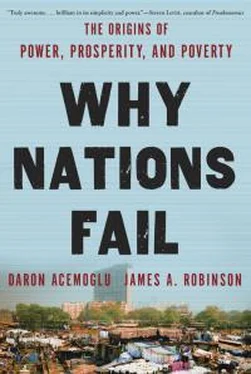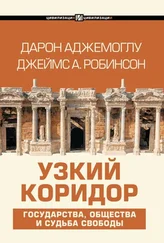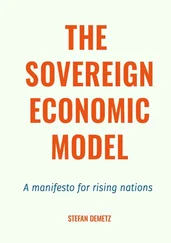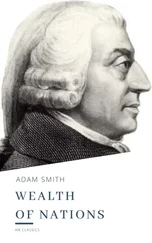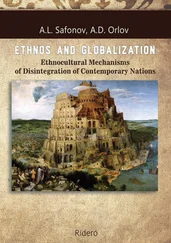No man or woman shall run away from the colony to the Indians, upon pain of death.
Anyone who robs a garden, public or private, or a vineyard, or who steals ears of corn shall be punished with death.
No member of the colony will sell or give any commodity of this country to a captain, mariner, master or sailor to transport out of the colony, for his own private uses, upon pain of death.
If the indigenous peoples could not be exploited, reasoned the Virginia Company, perhaps the colonists could. The new model of colonial development entailed the Virginia Company owning all the land. Men were housed in barracks, and given company-determined rations. Work gangs were chosen, each one overseen by an agent of the company. It was close to martial law, with execution as the punishment of first resort. As part of the new institutions for the colony, the first clause just given is significant. The company threatened with death those who ran away. Given the new work regime, running away to live with the locals became more and more of an attractive option for the colonists who had to do the work. Also available, given the low density of even indigenous populations in Virginia at that time, was the prospect of going it alone on the frontier beyond the control of the Virginia Company. The power of the company in the face of these options was limited. It could not coerce the English settlers into hard work at subsistence rations.
Map 2 shows an estimate of the population density of different regions of the Americas at the time on the Spanish conquest. The population density of the United States, outside of a few pockets, was at most three-quarters of a person per square mile. In central Mexico or Andean Peru, the population density was as high as four hundred people per square mile, more than five hundred times higher. What was possible in Mexico or Peru was not feasible in Virginia.
It took the Virginia Company some time to recognize that its initial model of colonization did not work in Virginia, and it took a while, too, for the failure of the “Lawes Divine, Morall and Martiall” to sink in. Starting in 1618, a dramatically new strategy was adopted. Since it was possible to coerce neither the locals nor the settlers, the only alternative was to give the settlers incentives. In 1618 the company began the “headright system,” which gave each male settler fifty acres of land and fifty more acres for each member of his family and for all servants that a family could bring to Virginia. Settlers were given their houses and freed from their contracts, and in 1619 a General Assembly was introduced that effectively gave all adult men a say in the laws and institutions governing the colony. It was the start of democracy in the United States.
It took the Virginia Company twelve years to learn its first lesson that what had worked for the Spanish in Mexico and in Central and South America would not work in the north. The rest of the seventeenth century saw a long series of struggles over the second lesson: that the only option for an economically viable colony was to create institutions that gave the colonists incentives to invest and to work hard.
As North America developed, English elites tried time and time again to set up institutions that would heavily restrict the economic and political rights for all but a privileged few of the inhabitants of the colony, just as the Spanish did. Yet in each case this model broke down, as it had in Virginia.
One of the most ambitious attempts began soon after the change in strategy of the Virginia Company. In 1632 ten million acres of land on the upper Chesapeake Bay were granted by the English king Charles I to Cecilius Calvert, Lord Baltimore. The Charter of Maryland gave Lord Baltimore complete freedom to create a government along any lines he wished, with clause VII noting that Baltimore had “for the good and happy Government of the said Province, free, full, and absolute Power, by the Tenor of these Presents, to Ordain, Make, and Enact Laws, of what Kind soever.”
Baltimore drew up a detailed plan for creating a manorial society, a North American variant of an idealized version of seventeenth-century rural England. It entailed dividing the land into plots of thousands of acres, which would be run by lords. The lords would recruit tenants, who would work the lands and pay rents to the privileged elite controlling the land. Another similar attempt was made later in 1663, with the founding of Carolina by eight proprietors, including Sir Anthony Ashley-Cooper. Ashley-Cooper, along with his secretary, the great English philosopher John Locke, formulated the Fundamental Constitutions of Carolina. This document, like the Charter of Maryland before it, provided a blueprint for an elitist, hierarchical society based on control by a landed elite. The preamble noted that “the government of this province may be made most agreeable to the monarchy under which we live and of which this province is a part; and that we may avoid erecting a numerous democracy.”
The clauses of the Fundamental Constitutions laid out a rigid social structure. At the bottom were the “leet-men,” with clause 23 noting, “All the children of leet-men shall be leet-men, and so to all generations.” Above the leet-men, who had no political power, were the landgraves and caziques, who were to form the aristocracy. Landgraves were to be allocated forty-eight thousand acres of land each, and caziques twenty-four thousand acres. There was to be a parliament, in which landgraves and caziques were represented, but it would be permitted to debate only those measures that had previously been approved by the eight proprietors.
Just as the attempt to impose draconian rule in Virginia failed, so did the plans for the same type of institutions in Maryland and Carolina. The reasons were similar. In all cases it proved to be impossible to force settlers into a rigid hierarchical society, because there were simply too many options open to them in the New World. Instead, they had to be provided with incentives for them to want to work. And soon they were demanding more economic freedom and further political rights. In Maryland, too, settlers insisted on getting their own land, and they forced Lord Baltimore into creating an assembly. In 1691 the assembly induced the king to declare Maryland a Crown colony, thus removing the political privileges of Baltimore and his great lords. A similar protracted struggle took place in the Carolinas, again with the proprietors losing. South Carolina became a royal colony in 1729.
By the 1720s, all the thirteen colonies of what was to become the United States had similar structures of government. In all cases there was a governor, and an assembly based on a franchise of male property holders. They were not democracies; women, slaves, and the propertyless could not vote. But political rights were very broad compared with contemporary societies elsewhere. It was these assemblies and their leaders that coalesced to form the First Continental Congress in 1774, the prelude to the independence of the United States. The assemblies believed they had the right to determine both their own membership and the right to taxation. This, as we know, created problems for the English colonial government.
A TALE OF TWO CONSTITUTIONS
It should now be apparent that it is not a coincidence that the United States, and not Mexico, adopted and enforced a constitution that espoused democratic principles, created limitations on the use of political power, and distributed that power broadly in society. The document that the delegates sat down to write in Philadelphia in May 1787 was the outcome of a long process initiated by the formation of the General Assembly in Jamestown in 1619.
The contrast between the constitutional process that took place at the time of the independence of the United States and the one that took place a little afterward in Mexico is stark. In February 1808, Napoleon Bonaparte’s French armies invaded Spain. By May they had taken Madrid, the Spanish capital. By September the Spanish king Ferdinand had been captured and had abdicated. A national junta, the Junta Central, took his place, taking the torch in the fight against the French. The Junta met first at Aranjuez, but retreated south in the face of the French armies. Finally it reached the port of Cádiz, which, though besieged by Napoleonic forces, held out. Here the Junta formed a parliament, called the Cortes. In 1812 the Cortes produced what became known as the Cádiz Constitution, which called for the introduction of a constitutional monarchy based on notions of popular sovereignty. It also called for the end of special privileges and the introduction of equality before the law. These demands were all anathema to the elites of South America, who were still ruling an institutional environment shaped by the encomienda , forced labor, and absolute power vested in them and the colonial state.
Читать дальше
